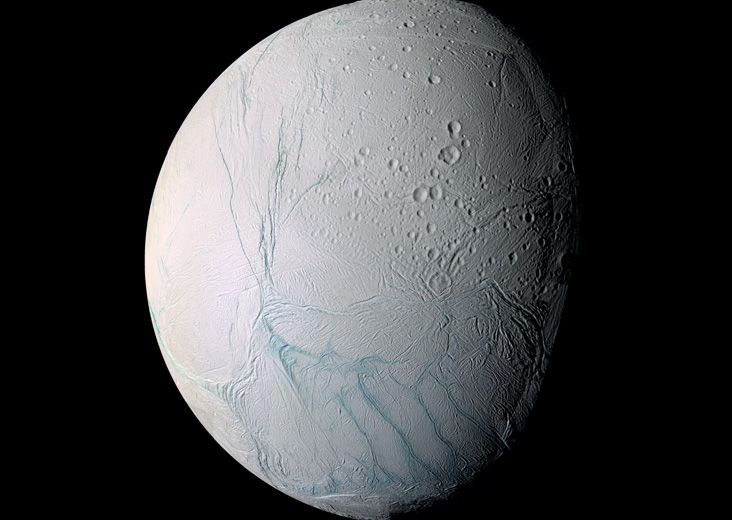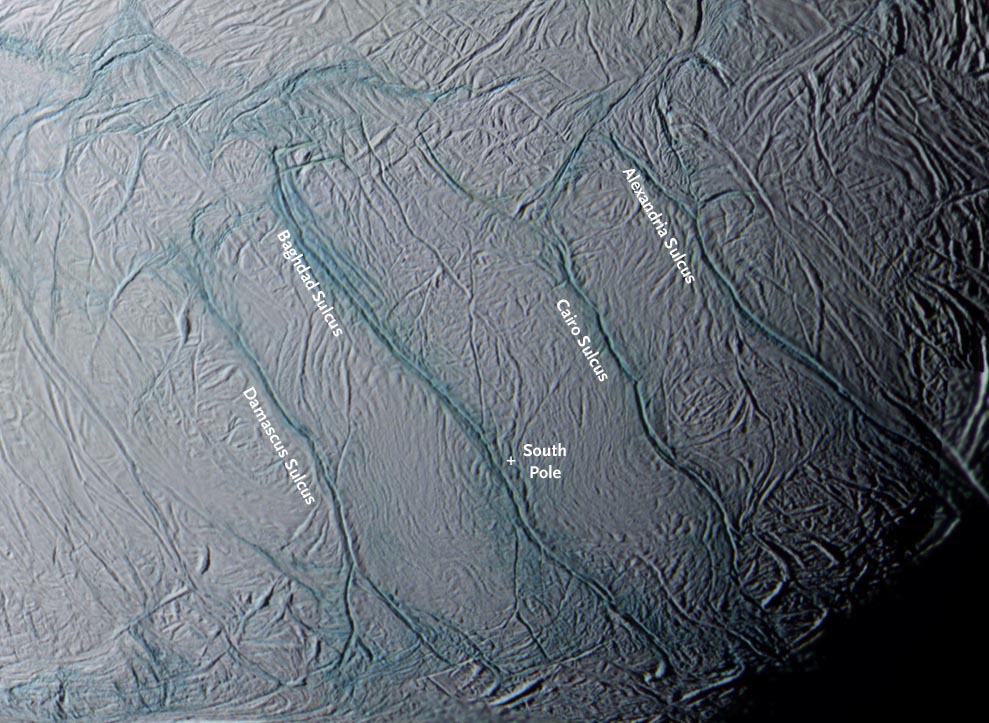
(Image: © NASA/JPL/Space Science Institute)
Enceladus, one of the moons of Saturn got overwhelming attention and attraction of scientists in a few years. The data obtained from Cassini spacecraft has been analyzing and with each coming day, some more mysteries are getting resolved. The ‘Tiger stripes’ of Enceladus are one of them, and a piece of good news is that the Weird Physics behind ‘Tiger Stripes’ Finally Explained.
Enceladus has been of particular interest to scientists ever since it was observed by NASA’s Cassini spacecraft. After analyzing Cassini’s data, they detected an icy, subsurface ocean on the moon and strange, tiger stripe markings on Enceladus south pole that are like nothing else known in our solar system. Icy material from Enceladus’ ocean spews into space through these stripes, or fissures, in the moon’s surface. These stripes are parallel and evenly spaced, about 130 kilometers long and 35 kilometers apart, and are continually erupting with water ice.
New research performed at Hemingway and colleagues Max Rudolph of the University of California, two scientists Davis, and Michael Manga of UC Berkeley unveiled the physical forces on the moon that cause these fissures to form and keep them in place. The team was also figured out why these cracks are even spaced and only found on the south pole of the moon.
The study shows that Enceladus is not a frozen solid, because the gravitational changes caused by its eccentric orbit around Saturn stretch it out slightly. It shapes deformed and causes the ice sheets at the poles to be thinner and more susceptible to splitting open. The team concluded that the fissures that make up these tiger stripes could have formed on the moon’s north pole just like the south pole, but the south pole cracked first.
Also, Read Enceladus, A potentially astrobiological habitable candidate


